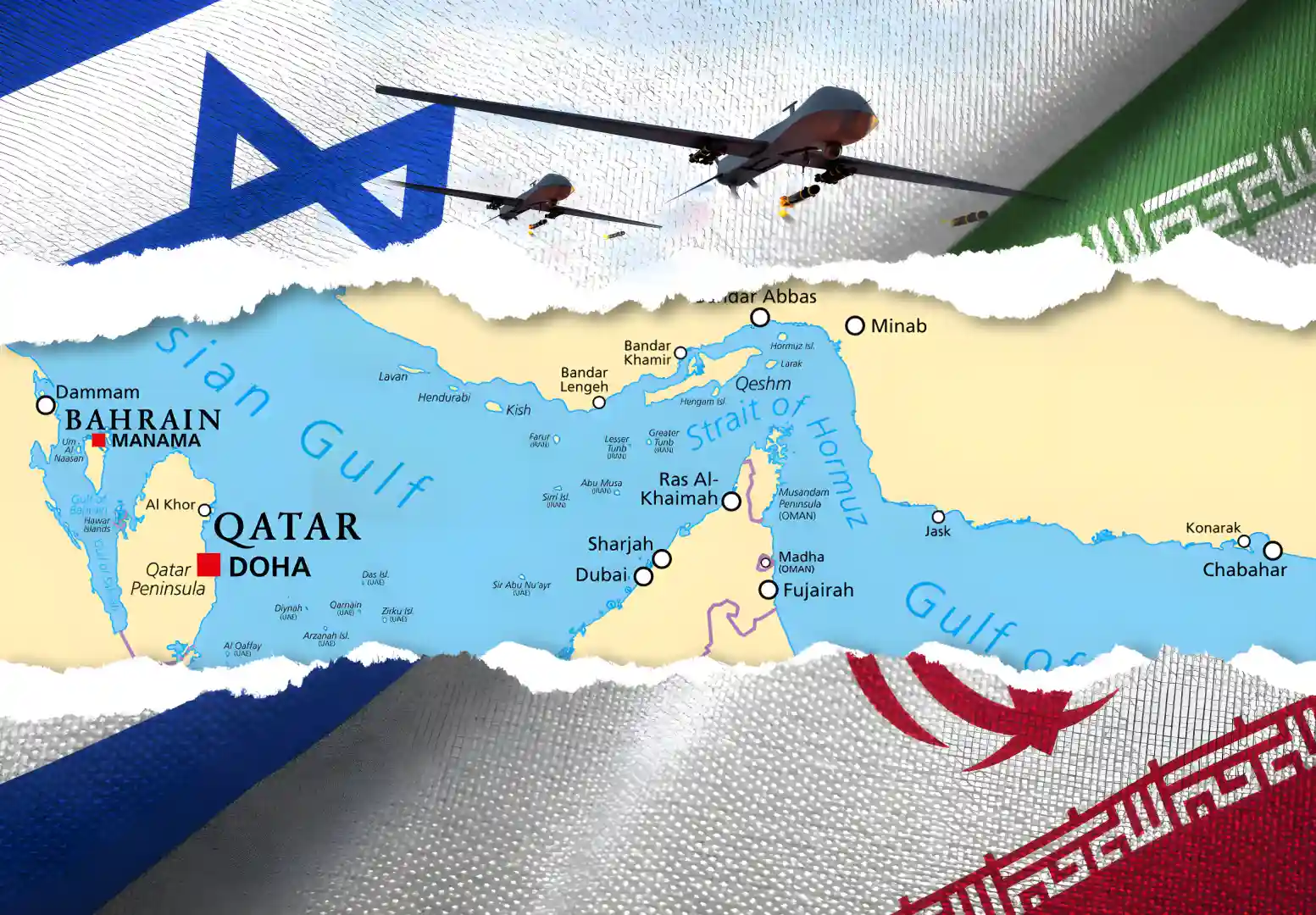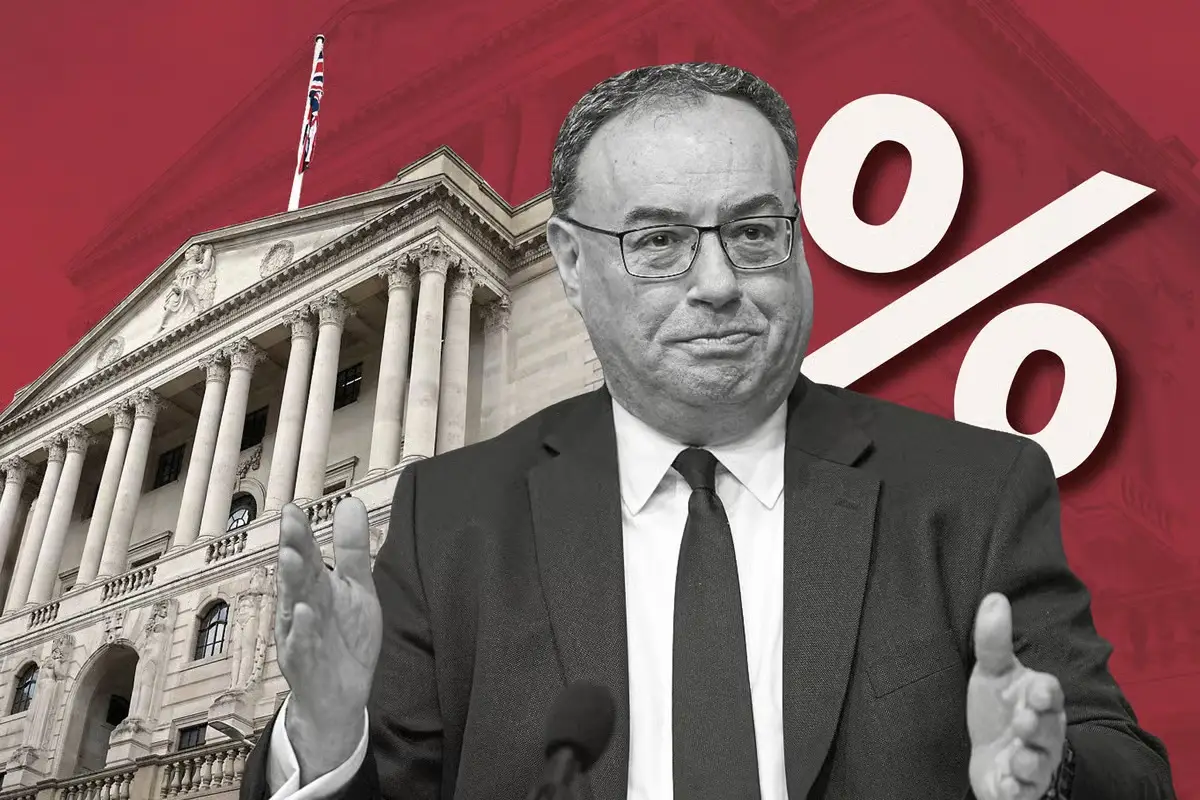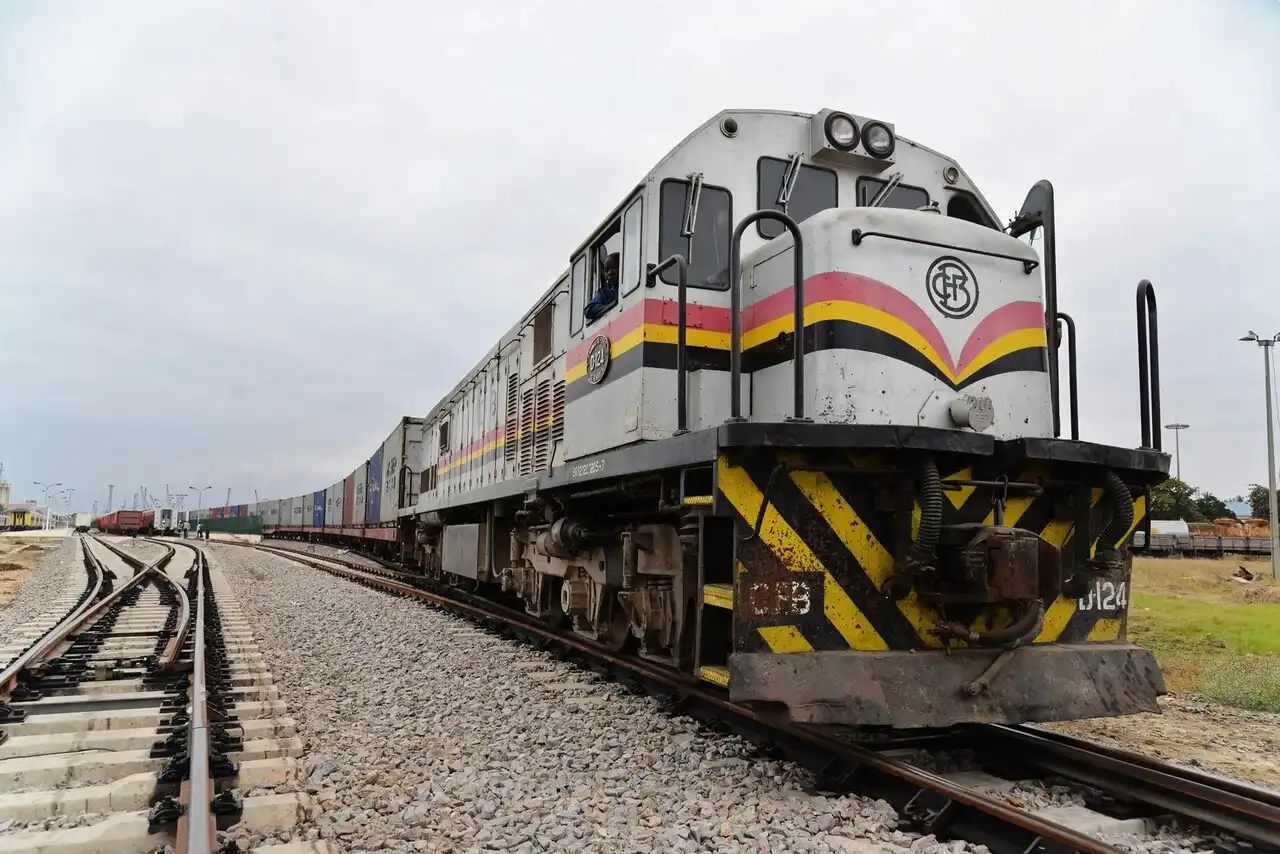A deepening crisis in the Middle East, fueled by recent US military strikes on Iran’s nuclear facilities, has brought the world to the brink of a potentially devastating economic shock. Iran’s renewed threat to close the Strait of Hormuz, one of the planet’s most vital maritime chokepoints, could send global oil and gas prices spiraling, triggering widespread inflation, crippling economic growth, and plunging international share markets into turmoil. For nations like Australia, already grappling with economic headwinds, the ripple effects could be felt acutely at the petrol pump and beyond.
The stakes are astronomically high. Roughly 20 percent of the world’s daily oil supply and 25 percent of its liquefied natural gas (LNG) flows through this narrow waterway. Financial analysts and economists are now openly discussing worst-case scenarios, with the prospect of petrol prices soaring by as much as 70 cents per litre in some regions. This grim forecast puts central banks, like the Reserve Bank of Australia (RBA), in an unenviable position, potentially forcing them to reconsider or delay crucial interest rate adjustments.
“It’s increasingly looking likely we might go into that worst-case scenario and the debate then goes into how long it lasts,” cautioned Dr. Shane Oliver, Chief Economist at AMP, who had previously assigned a 35 percent probability to such a closure, a risk now appearing significantly elevated.
The Strategic Importance of a Narrow Chokepoint
The Strait of Hormuz, a relatively narrow stretch of water, is a geographical marvel and a geopolitical flashpoint. It serves as the sole maritime passage from the Persian Gulf to the open ocean, specifically the Gulf of Oman and subsequently the Arabian Sea. At its narrowest point, between Oman’s Musandam Peninsula and Iran’s southern coast, the strait measures a mere 34 kilometers (21 miles) across. Within this tight squeeze, shipping lanes for oil tankers are just two miles wide in each direction, separated by a two-mile buffer zone.
This seemingly modest waterway is, in reality, a colossal energy conduit. The immense volume of oil and LNG that traverses the Strait daily underscores its irreplaceable role in global energy security. Major economies across Asia, including China, Japan, South Korea, and India, along with significant parts of Europe, are heavily dependent on these uninterrupted flows for their industrial operations, transportation, and daily energy needs. Any significant disruption here would not only impact immediate energy prices but could also trigger a cascading effect through global supply chains, affecting everything from manufacturing costs to consumer goods.
The Escalation: US Strikes and Iran’s Reaction
The immediate catalyst for Iran’s renewed threat stems from recent US military actions. On Saturday, June 21, 2025, US President Donald Trump authorized strikes on what the US Defense Secretary described as key Iranian nuclear facilities. While the US claimed these strikes had “devastated” Iran’s nuclear program, Tehran swiftly denied suffering a major blow, setting the stage for a retaliatory response.
In a swift and defiant move on Sunday, Iran’s parliament reportedly voted to endorse the closure of the Strait of Hormuz. Iran’s President publicly stated that the US “must receive a response to their aggression.” This parliamentary endorsement, while significant, is not the final word. Iranian state media, notably Press TV, reported that the ultimate decision regarding the closure rests with Iran’s Supreme National Security Council, which was expected to make a definitive announcement overnight on Sunday local time. This tiered decision-making process highlights the complex political dynamics within Iran and the gravity with which such a measure would be considered.
Historically, Iran has threatened to close the Strait of Hormuz on several occasions, often in response to increased international pressure or sanctions targeting its oil exports. These threats serve as a powerful geopolitical lever, aimed at disrupting global oil markets and signaling Iran’s willingness to escalate tensions in defense of its national interests. The current situation, however, feels particularly fraught given the direct military engagement and the explicit parliamentary vote.
Economic Aftershocks: Inflation, Interest Rates, and Markets
The immediate and most visible consequence of a potential Strait closure would be a dramatic spike in global oil prices. Dr. Oliver projected that sustained disruption could send Brent crude, the international benchmark, soaring from around $US70 a barrel (as of Friday, June 20) to as high as $US150 a barrel. His “rough rule of thumb” – that each $US1 increase in a barrel of oil translates to a one-cent increase per litre at the pump – illustrates the severe impact: a $80 increase in oil price could mean an additional 60-70 cents per litre for consumers.
The Inflationary Spiral
Such a sharp rise in fuel costs would directly and significantly increase headline inflation. Petrol typically accounts for about 3.5 percent of the Consumer Price Index (CPI), which in Australia rose by 2.4 percent in the 12 months to the March quarter. An increase of 60-70 cents per litre would easily add more than 1 percent to headline inflation, creating a formidable challenge for economic policymakers.
Beyond direct fuel costs, higher oil prices would ripple through the entire economy. Transportation costs for goods and services would increase, feeding into the prices of almost everything, from food to manufactured products. Businesses would face higher operational expenses, potentially impacting profit margins or leading to further price increases for consumers. This broader inflationary pressure could trigger a wage-price spiral if workers demand higher pay to offset rising living costs, embedding inflation into the economy for a longer duration.
The RBA’s Dilemma: Growth vs. Inflation
The RBA, like other central banks globally, would face a complex dilemma. The current cash rate in Australia stands at 3.85 percent, following a 25 basis point cut in May. Before the Strait of Hormuz crisis escalated, the consensus was leaning towards three more rate cuts this year (July, August, November) to bring the cash rate down to around 3.1 percent, aiming to stimulate economic growth.
A significant oil price spike, however, would fundamentally alter this outlook.
- Initial Reaction: The RBA’s immediate priority would likely be to contain inflation. Higher headline inflation due to fuel costs would create pressure to delay or even reverse rate cuts. The bank would need to assess if the inflation surge is temporary or if it’s likely to become entrenched.
- Longer-Term Perspective: Dr. Oliver highlighted a crucial nuance: “Higher oil prices are effectively a tax on consumer spending and economic growth. Ultimately that could outweigh the impact of higher petrol prices alone and drag down underlying inflation.” If consumers spend more on fuel, they have less disposable income for other goods and services, leading to a slowdown in demand. Businesses, facing higher input costs, might cut back on investment or hiring. This economic contraction could, paradoxically, reduce underlying inflationary pressures over time.
- The “Wait-and-See” Mode: The RBA would likely adopt a “wait-and-see” approach, closely monitoring both headline and underlying inflation figures, as well as the broader economic impact. If the disruption is brief, they might “look through that” and proceed with planned cuts. However, if a “clear disruption to trade” lasts for more than a few days, the RBA could conceivably “wait a bit longer” before acting on rates. This uncertainty would itself add to market volatility.
Global Market Fallout
The prospect of a Strait of Hormuz closure would undoubtedly trigger a sharp sell-off in global share markets. Investors would react to the uncertainty, the inflationary threat, and the anticipated slowdown in economic activity. Sectors heavily reliant on stable oil prices, such as airlines, logistics, manufacturing, and consumer discretionary goods, would likely see significant downturns.
Conversely, energy stocks could experience a “hearty rally.” As oil prices surge, companies involved in oil and gas production stand to benefit from higher revenues and profits. This was evident on Monday morning, with oil futures trading around $US77 a barrel, up approximately 4 percent from Friday, indicating initial market reaction to the escalating tensions. Investment firms, like Melbourne-based Joseph Palmer & Sons, have already noted this potential for energy stock gains.
The Mechanics of Disruption: Beyond a “Rope Across”
Blocking the Strait of Hormuz isn’t a simple matter of stringing a barrier. Iran’s capabilities for disruption are far more sophisticated and insidious. As Dr. Oliver explained, “It’s not actually putting a rope across — they could put mines in it, use missiles and drones to attack shipping, use small speedboats to attack bigger boats, that sort of stuff.” The precedent set by the Houthis, who have successfully attacked shipping in the Red Sea and Gulf of Aden, demonstrates that even a few successful strikes can deter shipping, forcing vessels to reroute around Africa, leading to immense delays, higher freight costs, and massive disruptions to global supply chains.
The psychological impact alone can be sufficient to cause widespread disruption. “They’ve only got to do it once, just like the Houthis [attacking shipping in the Gulf of Aden]. All you’ve got to do is do it once, you threaten to do it and ships stay away,” Dr. Oliver noted. Indeed, public vessel tracking data on Monday morning showed at least one Chinese oil tanker making a U-turn near the Strait, even as it officially remained open. This immediate reaction highlights the sensitivity of shipping companies to perceived risks.
International shipping organizations and governments are already urging extreme caution. The Baltic and International Maritime Council (BIMCO), one of the world’s largest international shipping associations, has advised heightened vigilance in the entire Middle East region, including the Strait of Hormuz and the Red Sea, in light of renewed Houthi threats against American vessels. Greece’s Shipping Ministry has similarly recommended that shipowners “reassess their transit through the Strait of Hormuz,” signaling the profound concern within the global maritime industry.
The US military, represented by figures like Chairman of the Joint Chiefs of Staff General Dan Caine, is on “high alert” for retaliation. While Dr. Oliver believes the US could “quickly disable Iran’s ability to block the Strait of Hormuz,” he acknowledges that even this intervention could take “weeks” to fully secure the channel, during which time significant economic damage would already be incurred.
Broader Geopolitical Context: Regional Volatility and Global Repercussions
The Strait of Hormuz crisis is not isolated; it is a critical escalation within a wider tableau of regional instability. The ongoing Houthi attacks on commercial shipping in the Red Sea and Gulf of Aden, stemming from the conflict in Yemen and linked to broader Iran-aligned proxy networks, have already demonstrated the vulnerability of key maritime trade routes. The convergence of these threats amplifies the risk to global commerce.
The situation also tests international diplomacy. US Secretary of State Marco Rubio’s stark warning that closing the Strait would be a “suicidal move” for Iran, leading to global condemnation, reflects the severity of the potential reaction from the international community. His call for China to exert its influence on Tehran underscores the expectation that major powers, particularly those with significant economic interests at stake, should play a role in de-escalating tensions. China, as the largest customer for oil flowing through the Strait, stands to be “the most affected,” making its diplomatic engagement particularly crucial.
Australia’s Position: A Mixed Bag of Economic Effects
For Australia, the implications of a Strait of Hormuz closure are complex and multi-faceted. While Australian consumers would undoubtedly bear the brunt of soaring petrol prices, the nation’s position as a net energy exporter provides a unique counterbalance.
- Consumer Impact: Higher petrol prices would directly hit household budgets, reducing disposable income and potentially dampening consumer spending across various sectors. This acts as an effective “tax” on consumers, potentially slowing domestic economic growth.
- Net Energy Exporter Status: Australia is a significant global exporter of liquefied natural gas (LNG). A global surge in energy prices, driven by oil, often pulls up gas prices as well. This means that while Australian households face higher fuel costs, the national economy could see a boost from increased revenue from its LNG exports. This partially offsets the negative impact of higher import costs.
- Australian Dollar (AUD): Alex Moffatt, director of Melbourne investment firm Joseph Palmer & Sons, suggested that the Aussie dollar could “rally on ‘safe-haven’ buying.” In times of global uncertainty, investors often seek stability in commodity-linked currencies or those associated with stable economies. While the US dollar is typically the primary safe-haven, a major energy shock could lead to capital flows into commodity-rich economies like Australia.
- Trade with Asia: Australia’s close economic ties with Asian giants like China, Japan, and South Korea mean that any economic distress suffered by these major energy importers due to the Strait closure would indirectly impact Australia through reduced demand for its exports (iron ore, coal, agricultural products).
Dr. Oliver succinctly summarized the situation: “China, being the largest customer for this oil stands to be the most affected. We can expect our energy stocks to enjoy a hearty rally today and the Aussie dollar to rally on ‘safe-haven’ buying.” As of Monday morning, despite the ongoing uncertainty, oil futures trading around $US77 a barrel indicated that markets are already pricing in some level of risk.
Conclusion: A Global Economy on Edge
The threatened closure of the Strait of Hormuz by Iran presents a severe test for the global economy. While the Strait currently remains open for commercial use, the explicit parliamentary vote and the ongoing regional tensions underscore the heightened risk. The potential for petrol prices to surge by 70 cents per litre is not just an Australian concern; it reflects a looming global inflationary shock that could force central banks worldwide into difficult policy decisions, slow economic growth, and trigger market volatility.
The situation remains fluid, characterized by “a lot of noise at the moment,” as Dr. Oliver described it. However, the escalating rhetoric and military actions highlight the fragility of global energy supply chains and the interconnectedness of geopolitical events with everyday economic realities. The world waits, with bated breath, for the final decision from Iran’s Supreme National Security Council, understanding that the outcome will have profound and lasting consequences for global stability and prosperity.
Ready to take your career to the next level? Join our dynamic courses: ACCA, HESI A2, ATI TEAS 7 , HESI EXIT , NCLEX – RN and NCLEX – PN, Financial Literacy!🌟 Dive into a world of opportunities and empower yourself for success. Explore more at Serrari Ed and start your exciting journey today! ✨
Photo source: Google
By: Montel Kamau
Serrari Financial Analyst
23rd June, 2025
Article, Financial and News Disclaimer
The Value of a Financial Advisor
While this article offers valuable insights, it is essential to recognize that personal finance can be highly complex and unique to each individual. A financial advisor provides professional expertise and personalized guidance to help you make well-informed decisions tailored to your specific circumstances and goals.
Beyond offering knowledge, a financial advisor serves as a trusted partner to help you stay disciplined, avoid common pitfalls, and remain focused on your long-term objectives. Their perspective and experience can complement your own efforts, enhancing your financial well-being and ensuring a more confident approach to managing your finances.
Disclaimer: This article is for informational purposes only and does not constitute financial advice. Readers are encouraged to consult a licensed financial advisor to obtain guidance specific to their financial situation.
Article and News Disclaimer
The information provided on www.serrarigroup.com is for general informational purposes only. While we strive to keep the information up to date and accurate, we make no representations or warranties of any kind, express or implied, about the completeness, accuracy, reliability, suitability, or availability with respect to the website or the information, products, services, or related graphics contained on the website for any purpose. Any reliance you place on such information is therefore strictly at your own risk.
www.serrarigroup.com is not responsible for any errors or omissions, or for the results obtained from the use of this information. All information on the website is provided on an as-is basis, with no guarantee of completeness, accuracy, timeliness, or of the results obtained from the use of this information, and without warranty of any kind, express or implied, including but not limited to warranties of performance, merchantability, and fitness for a particular purpose.
In no event will www.serrarigroup.com be liable to you or anyone else for any decision made or action taken in reliance on the information provided on the website or for any consequential, special, or similar damages, even if advised of the possibility of such damages.
The articles, news, and information presented on www.serrarigroup.com reflect the opinions of the respective authors and contributors and do not necessarily represent the views of the website or its management. Any views or opinions expressed are solely those of the individual authors and do not represent the website's views or opinions as a whole.
The content on www.serrarigroup.com may include links to external websites, which are provided for convenience and informational purposes only. We have no control over the nature, content, and availability of those sites. The inclusion of any links does not necessarily imply a recommendation or endorsement of the views expressed within them.
Every effort is made to keep the website up and running smoothly. However, www.serrarigroup.com takes no responsibility for, and will not be liable for, the website being temporarily unavailable due to technical issues beyond our control.
Please note that laws, regulations, and information can change rapidly, and we advise you to conduct further research and seek professional advice when necessary.
By using www.serrarigroup.com, you agree to this disclaimer and its terms. If you do not agree with this disclaimer, please do not use the website.
www.serrarigroup.com, reserves the right to update, modify, or remove any part of this disclaimer without prior notice. It is your responsibility to review this disclaimer periodically for changes.
Serrari Group 2025
















